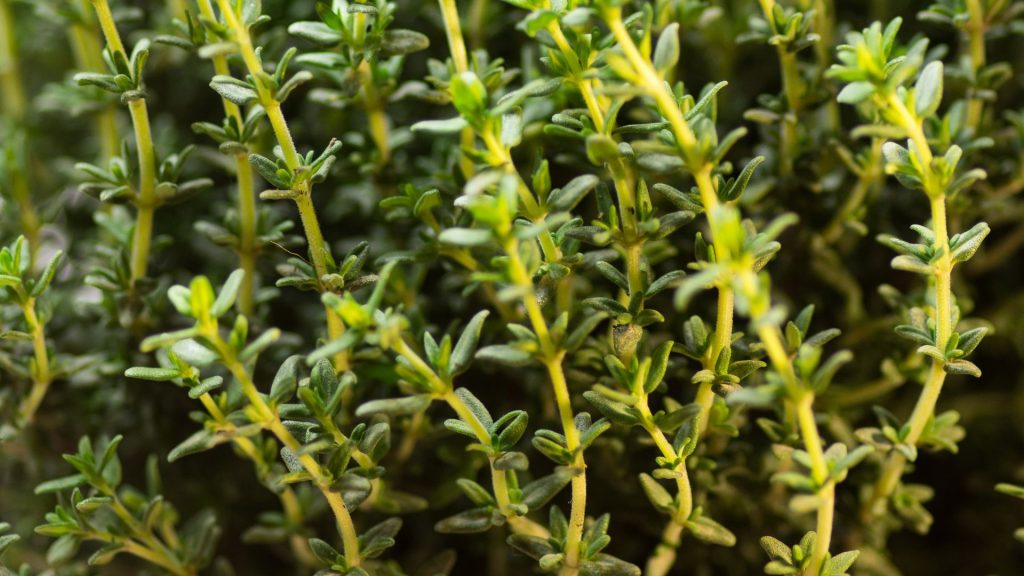The amazing plant thyme can be easily propagated by cuttings, and even a beginner can handle it. This herb has a long history and several applications, not the least of which is culinary. Thyme was used for embalming by the ancient Egyptians, as incense by the early Greeks, and even as a present to encourage bravery among soldiers throughout the Middle Ages. It’s a must-have for the herb garden because it has so many uses. So, let’s get down to the breeding procedure.
How to Grow Thyme from Cuttings?
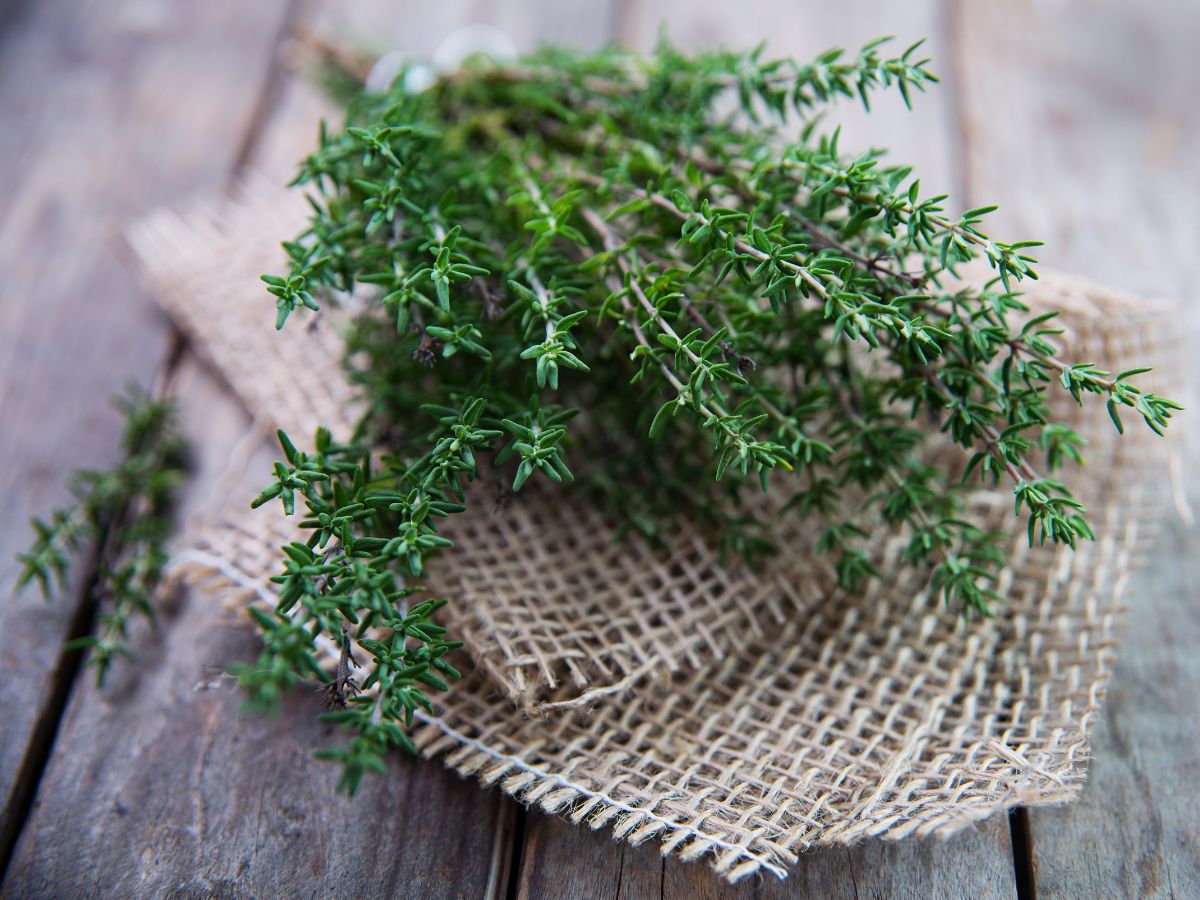
Culinary thyme (Thymus vulgaris) is a widely used herb in a variety of cuisines. It’s a tiny, perennial plant that thrives in a variety of climates and is a perfect addition to any home garden.
Growing thyme from seed might be difficult, but happily, cuttings are quite easy to cultivate!
Thyme has a horizontal growth pattern, which means it propagates itself in the soil organically.
To speed up the process, rooting hormone is advised, however, thyme can often root in water or straight in the soil if the cutting is timed correctly and the suitable stem is picked.
When to Take Thyme Cutting?
When it comes to taking a clipping from a thyme plant, timing is everything.
The stem must be mature enough to survive, but not too mature because hardwood cuttings from woody stems have a significantly lower chance of taking root. Taking a softwood cutting improves your odds of succeeding.
It’s also a good idea to avoid taking a clipping from a thyme plant that has started flowering after the growth season. This is because it is in a different development phase and is less likely to establish roots.
Thyme blossoms in the late spring and early summer, therefore taking thyme cuttings in the early spring is a smart idea. Soft stem development should still be present, however, this is before flower buds form.
Step by Step on How to Propagate Thyme
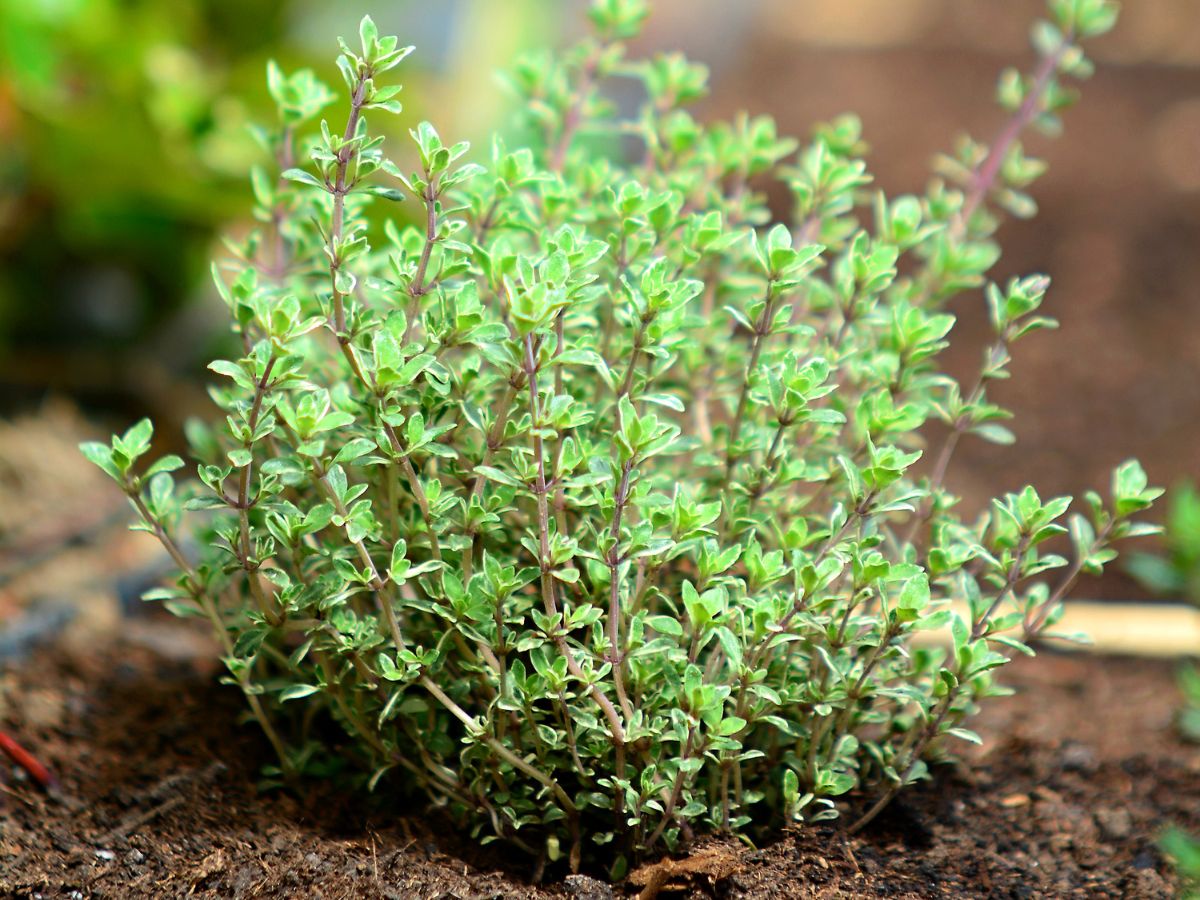
Thyme is difficult to cultivate from seeds, thus growing thyme from cuttings is the best approach.
Get Thyme
Of course, you’ll need thyme cuttings to get started.
If you’re cultivating your thyme, simply snip off several healthy, non-flowering sprigs – 4-6′′ long would be enough! You may take cuttings at any time during the growing season, but the optimal period is between spring and fall when the plant is actively growing.
If you don’t have thyme growing in your garden and don’t know anyone who would be willing to share theirs, most grocery shops and farmers’ markets sell fresh thyme in packs or bunches. While cutting sprigs straight from the plant is preferred, bought sprigs are acceptable as long as they are fresh.
Remove the Leaves
Remove the leaves from the lower end of the stem once you have a thyme sprig; you’ll want around 2′′ of the naked stem to act as the basis for subsequent roots. Cut the sprig’s tip at a 45-degree angle if you’re ready to propagate it straight away. This will guarantee that the sprig’s core receives some new light. If you aren’t ready to propagate right away, keep the sprigs wrapped in a plastic bag in the fridge.
Dip the Stem into a Growth Hormone
You have the option of immersing the sprig’s naked stem into a rooting hormone at this time. Using a growth hormone isn’t required, especially when growing thyme, which you’ll most likely consume afterward. It may be important in some circumstances for stronger roots, but you can often get away without it.
If you wish to utilize a growth hormone to help your roots develop quicker and healthier, you can get it in powder or gel form at your local garden shop. Simply drop the tip of the sprig into the growth hormone after dipping the stem in water.
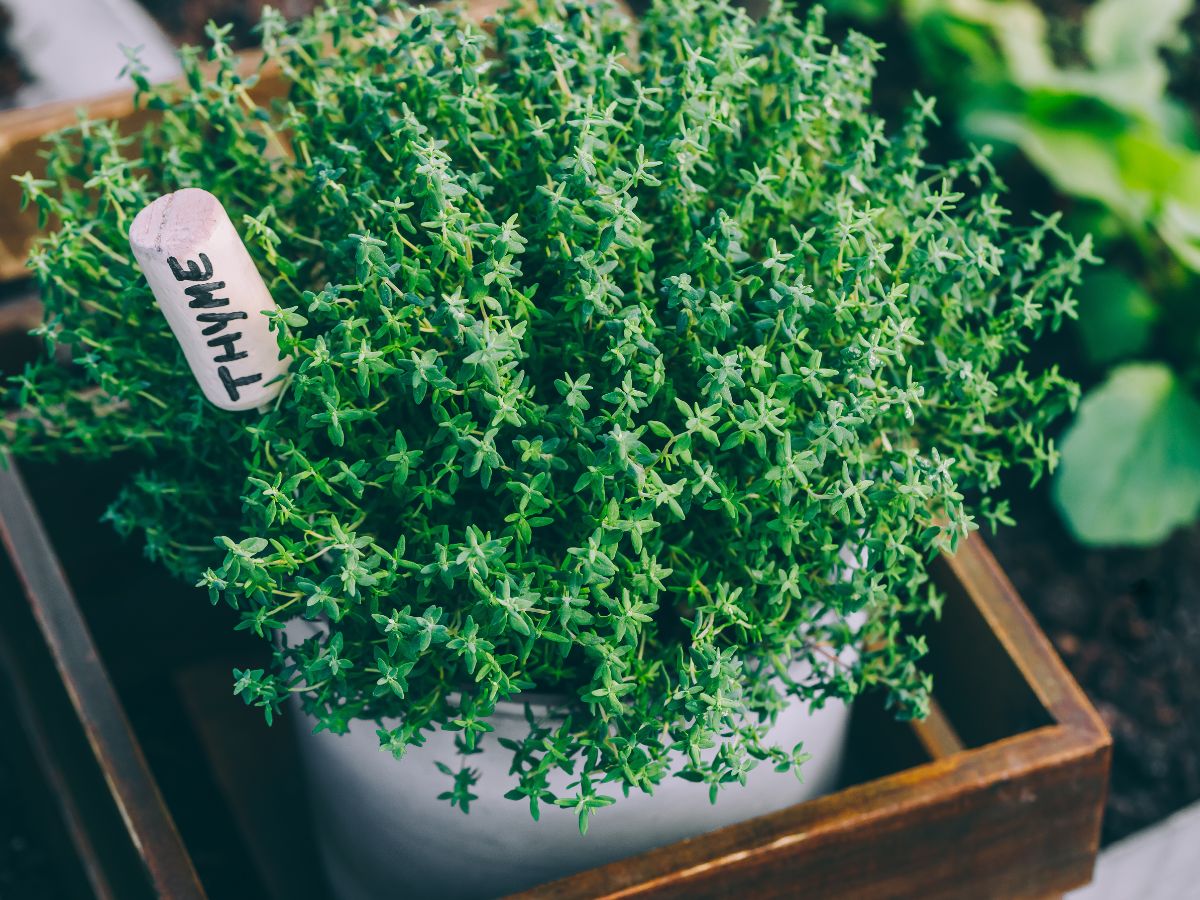
Please bear in mind that when using a rooting hormone to propagate thyme, most hormones (whether powder or gel) require you to wait a full year before eating any portion of the plant. If you want to learn more about how to use a growth hormone, check the label.
Start the Root Structure
You can plant the thyme stem in a potting soil mix to ensure that it has sufficient drainage if you opted to start the plant with a growth hormone. Because these are simply little sprigs at this time, it’s best to put them in a small pack or pot. You’ll be able to move the plant around if necessary.
Rooting Thyme Cuttings in Water as an Alternative Method
You’ll want to build a root system before planting thyme in the soil if you’re not utilizing a growth hormone. To do this, you can use the propagating thyme in water method. To grow it this way, place your thyme plant in a glass of water with the 2″ of bare stem fully immersed to achieve this. You should observe the roots coming out of the stem after 3-4 weeks! The plant is ready to be planted in potting soil once it has developed some mature roots. Make sure the stem of the sprig is in excellent touch with the soil so that the root system may grow into it right away.
Thyme Growing Conditions
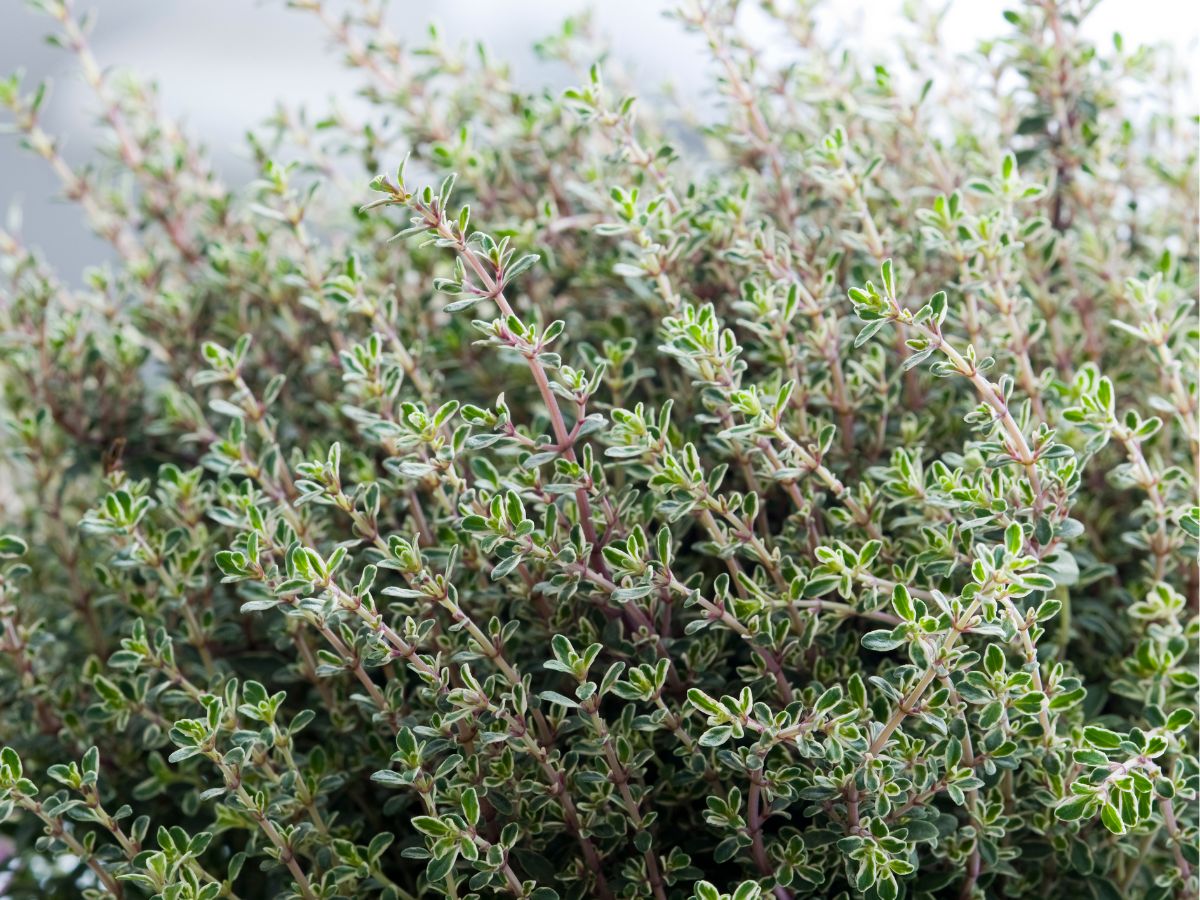
Now that you’ve got your plant, start treating it like any other young plant you’d buy from a greenhouse or growing center. Ensure that the thyme plant receives enough light and water.
Thyme Sun Requirements
Because of their Mediterranean roots, thyme plants flourish best in broad sunshine. Plant them in a sunny, exposed place in your garden, or in attractive pots that can be moved about to chase the light throughout the day. If you’re growing thyme inside, put it on a sunny windowsill or, better yet, in a room that gets a lot of sunlight throughout the day, like a sunroom.
Selecting the Best Soil
Your thyme plant may thrive better if your soil is poor. The easygoing herb likes sandy or loamy soil over damp soil, and it may even grow on rough gravel. Thyme spreads fast, so be sure to place your plants at least 12-24 inches apart when adding them to your yard. If you’re going to plant in a pot, choose a bigger one so the thyme can grow into it. It’s also a good idea to use a clay container since it may drain away excess moisture from the soil and help your thyme grow in the correct climate. Whatever you do, make sure your soil is well-draining, since thyme may be finicky when it comes to moist roots.
How to Water?
Water established thyme plants only once in a while to adequately maintain them—every other week or even once a month should suffice, depending on your outdoor temperature. Wait until the soil is entirely dry before watering to saturation and let it dry again. Thyme is extremely drought-resistant, so don’t worry if you forget to water it for a few days. Young plants, on the other hand, should be given greater attention, with more regular water checks until their roots are firmly established.
Temperature and Humidity
Thyme plants don’t require particular conditions in terms of temperature or humidity and may survive for most of the year until frost (at which point they will go dormant for the winter). The summer months are when they grow the most, and this is also when you’ll notice their blossoms blooming, which attract bees and other insects. To avoid fungal illnesses, thyme, especially in warm, humid regions, requires sufficient air circulation. Plants should be widely spaced to allow them enough ventilation.
Don’t Forget Fertilizers
Apply a diluted all-purpose fertilizer to thyme plants in the spring. Using half-strength fertilizer will prevent the plant from developing too many leaves, which will dilute the fragrance oils.
Air Circulation
Because your cuttings are enclosed in plastic bags, there isn’t much air circulation within. A rise in pests and illnesses is linked to poor air circulation. However, you shouldn’t be too concerned about it. All you have to do is uncover the containers and set them in a well-ventilated area for a few hours each day to enable your cuttings to breathe.
After four to six weeks, your thyme cuttings will be completely rooted and ready to be transferred to other pots if you follow these procedures.
How Long Does Thyme Take to Grow?
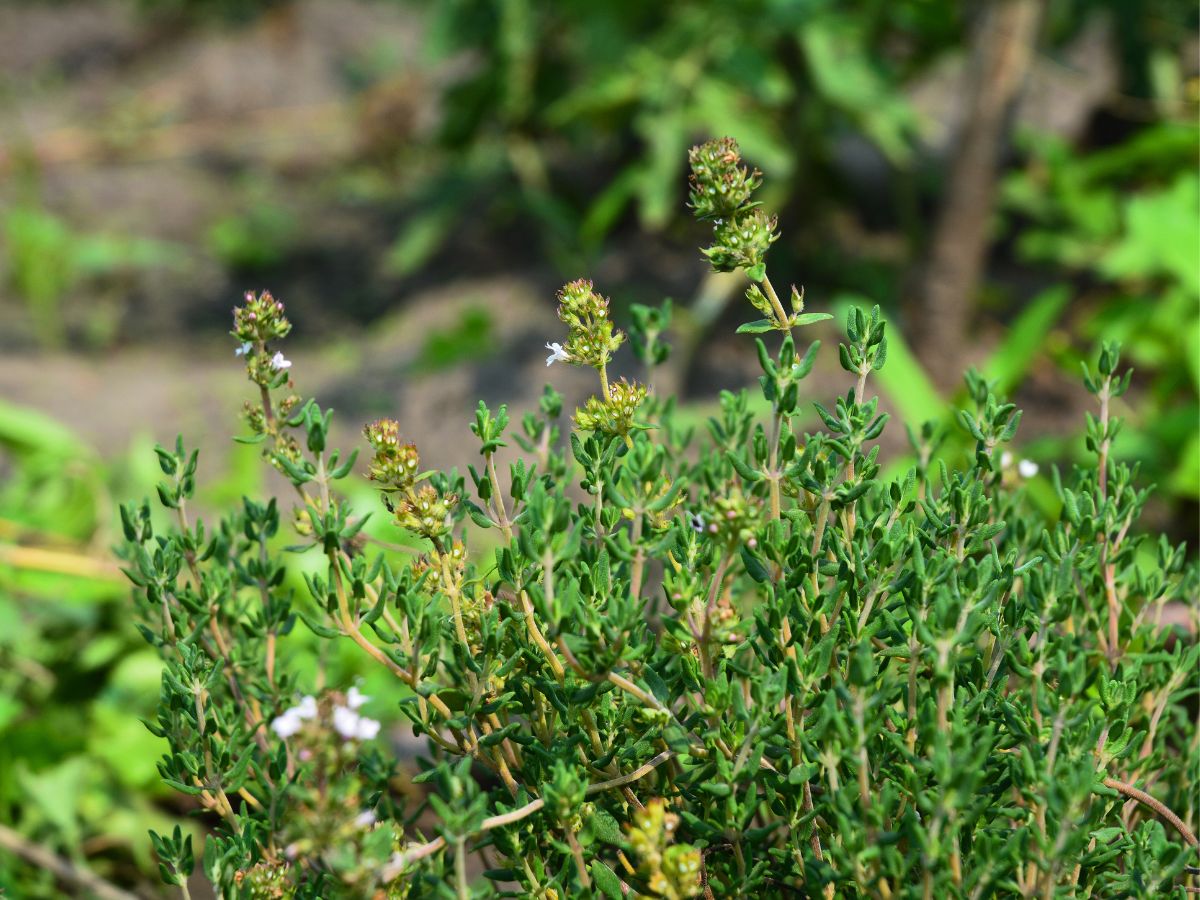
The time thyme takes to root and flourish may vary depending on when you propagate it. Usually, after 6-8 weeks, you’ll notice some signs of progress.
Harvesting: How to Cut Thyme?
During the growing season, thyme can be cut at any time. There are no specific guidelines for cutting thyme, but you should leave at least five inches of the plant remaining to allow it to continue growing. To encourage the emergence of new shoots, it’s also a good idea to remove sensitive new growth. When trimming your thyme plant, always avoid the rough, woody sections.
Bonus Tip: Harvest the herb before sunrise to get the most taste out of it. Thyme should be harvested as soon as the dew has dried.
Possible Diseases and Pests
Thyme doesn’t have any major issues, although it can have root rot if it’s planted in too wet of a soil. Thyme should not be planted on soil that is excessively thick or rich.
Does Thyme Grow Back?
Thyme is a perennial herb, which means it will come back year after year without needing to be replanted. Thyme may survive for up to 6 years on average, although it can live for much longer in exceptional cases. This is a perennial herb, as are the majority of herbs.
Uses of Thyme
Thyme can be dried, refrigerated, frozen, or preserved in oil or vinegar in a variety of ways. The little leaves dry swiftly in the air. To taste, add thyme to butter or mayonnaise. Thyme may be used to flavor dry beans, meat stews, and vegetables like cabbage. Thyme compliments any slow-cooked soup, stew, vegetable, meat, or sauce. Lemon-flavored variants are great in teas, over seafood, and in just about any recipe that needs a little zing.
By the way, did you know that thyme is an excellent ground cover? In addition to its health benefits and ability to be widely used in cooking, it can also decorate even the most unsightly corner of the garden.
So, this little shrub-like herb may simply be divided or reproduced by cuttings. During the spring months, propagate by root division. Divide the small shrub into smaller portions, making sure that each one has roots connected. This herb can be used in potpourri and sachets, as an antiseptic, in wreaths and floral arrangements, and in a variety of culinary creations ranging from vinegar to herbal butter, stuffing, soups, and teas. It is a simple plant to grow and propagate, and it is an important addition to any herb garden.


